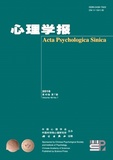Since they are critical components of today’s societies, interethnic relations can exert a great effect on the stability and harmony of a given social system. For multi-ethnic countries like China, achieving harmonious relations among different ethnic groups is an important but difficult task. Intergroup contact has been confirmed as one of the most effective prejudice reduction strategies across different target groups, situations, and cultural contexts, especially when the four optimal conditions, equal status, cooperation, common goals, and institutional support, are present. However, past contact research is biased because its predominant focus is on positive contact; insufficient attention has been paid to the examination of negative contact, especially in China. Moreover, much of the prior research has focused on intergroup contact from the perspective of majority groups. To address these limitations, this article tested the effects of positive and negative contact from the points of view of both majority and minority groups, and intergroup efficacy was examined as a mediator in positive and negative contact effects.
Two studies were conducted within two interethnic backgrounds on six samples in total. They were 448 Han (Mage = 20.3, SD = 1.66) and 375 Uyghur (Mage = 21.7, SD = 1.75) from several inland cities, and 791 Han (Mage = 20.1, SD = 1.23) and 901 Uyghur (Mage = 20.8, SD = 1.19) from Xinjiang Province of Study 1, 957 Han (Mage = 15.7, SD = 1.80) and 565 Hui (Mage = 15.9, SD = 1.91) from Ningxia Province of Study 2. All participants completed a battery of self-report questionnaires measuring their positive and negative interethnic contact experiences, interethnic self-efficacy, and intention of interethnic contact. All the measures in the present study showed good reliability and validity for each sample. Data were then analyzed using descriptive statistics, dependent t-test, correlation coefficients comparison, and path analysis to test the hypotheses related to the valence of contact and the role of efficacy.
he results indicated that: (1) the quantity of positive interethnic contact was significantly much more than negative interethnic contact in all six samples. The weighted average effect size measured by Cohen’s d was 1.75. (2) The correlations between positive interethnic contact and intention of interethnic contact in all six samples were positively significant with medium sizes; the correlations between negative interethnic contact and intention of interethnic contact in all six samples were negatively significant with small sizes, with weighted average rs 0.57 and -0.24 respectively. (3) Valence asymmetry effect showed positive interethnic contact’s effects on enhancing intention of interethnic contact were greater than negative interethnic contact’s effects on weakening intention of interethnic contact. The weighted average r difference was 0.38. (4) Positive and negative interethnic contact exerted significant indirect effects on intention of interethnic contact via interethnic self-efficacy with weighted average indirect effects of 0.13 and -0.08 respectively; positive and negative interethnic contact could also affect intention of interethnic contact directly. (5) Positive and negative interethnic contacts’ effects on intention of interethnic contact were stronger among Han compared with Uyghur in Xinjiang, and positive contact’s effect was significantly lower among Han than Hui in Ningxia. No significant differences were found between majority and minority samples in inland samples on both effects, and no significant difference was found in Ningxia samples on negative contact’s effect. In general, the moderation effect of the majority-minority status was not supported.
Research into the effects of positive and negative interethnic contact and the mediating role of interethnic self-efficacy demonstrates both theoretical and practical implications. Theoretically, conducting research taking into positive and negative interethnic contact simultaneously could not only serve as a response to the call for strengthening negative contact research, but more importantly, it enriches intergroup contact theory through acquiring evidence from Chinese ethnic background and contributes to a comprehensive understanding of intergroup contact. Practically, the findings presented above suggest that to achieve harmonious interethnic relations, effective measures can be taken to promote positive interethnic contacts and prevent negative interethnic contacts through increased interethnic self-efficacy or directly enhancing the contact intention.




